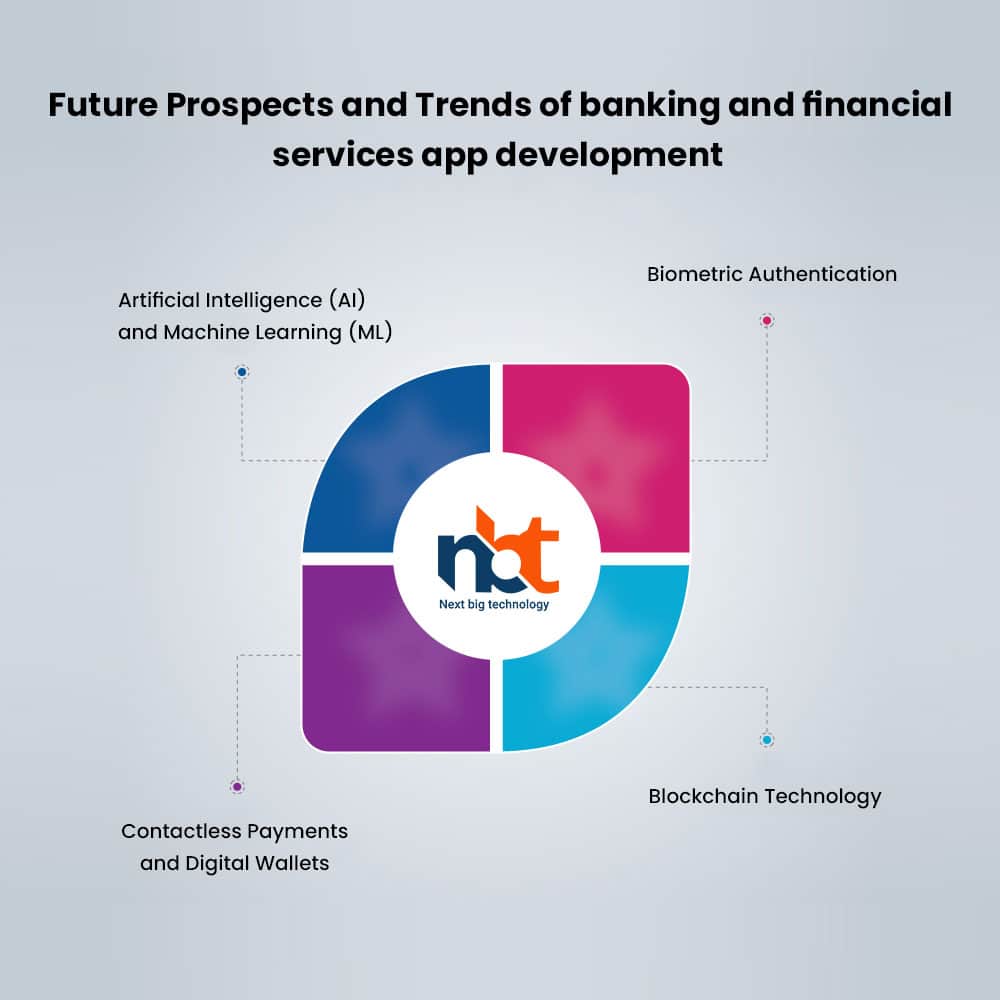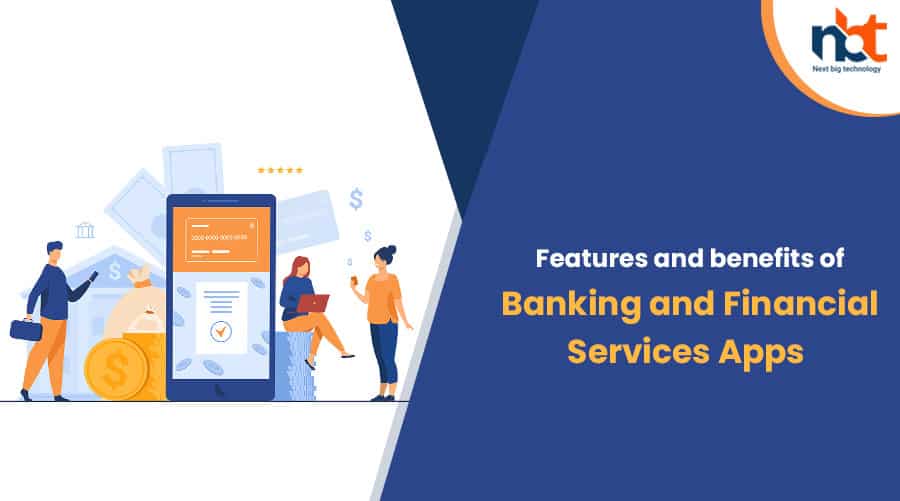In today’s digital age, the world of banking and financial services is going through a rapid transformation. The innovation of mobile app development has changed the way people manage their finances. Mobile banking apps have today become one of the primary ways in which people sign in to their bank accounts and use it for transactions. The trend of mobile banking is so high and prominent that banks, across size and geographical locations, are not just expanding into the online banking app development offering but are also looking for ways to make them new-generation technology-rich.
Table of Contents
Features and benefits of Banking and Financial Services Apps
There are many features and benefits of these apps. Here are some:
-
Convenience and Accessibility:
Banking and financial services apps have transformed traditional banking into an easy user-friendly experience. Customers no longer have to wait in long queues for their works, they can now access their accounts with a few taps on their smartphones, making transactions at their convenience.
-
Enhanced Security:
With advanced encryption techniques, secure login methods, and real-time fraud detection, banking apps ensure that customer information remains confidential. Customers also receive immediate notifications for any suspicious activities, allowing them to take immediate action.
-
Personalized Services:
Through app development, banks and financial institutions can gather data on customers’ financial behaviour and preferences. This information enables them to offer personalized services to its customers.
-
Cost Savings:
Traditional banking involves significant operational costs, including maintaining physical branches and hiring staff. By increasing these app development, financial institutions can smoothly run their operations and also reduce costs associated with physical infrastructure.
-
Improved Customer Engagement:
Banking apps provide financial institutions with a direct way to engage and interact with their customers. Through push notifications, personalized messages, and in-app support, banks can communicate with users, keeping them informed about new products, offers, or important updates.
-
Mobile Deposits:
Many banking apps allow users to deposit checks by simply capturing an image of the check using their smartphone’s camera. This feature eliminates the need to visit a physical branch, saving time and effort.
The Rise of Banking and Financial Services Apps
The banking and financial services app development market has experienced significant growth in recent years. The usage of smartphones and the increasing trend of the internet has created a way for the rise of banking and financial services apps. By offering a user-friendly interface, banking apps have empowered customers to take control of their financial lives.
According to a report by Research and Markets, The global financial services market grew from $25848.74 billion in 2022 to $28115.02 billion in 2023 at a compound annual growth rate (CAGR) of 8.8%.
The market value of banking and financial services app development is influenced by various factors, including the number of users, transaction volume, app functionality, and the level of competition. As the market continues to evolve, developers are focusing on enhancing security, personalization, and user experience to stay competitive.
Future Prospects and Trends of banking and financial services app development

The future Of banking and financial services app development looks promising, with several trends and advancements set to shape the industry. Here are some key areas:
-
Artificial Intelligence (AI) and Machine Learning (ML):
AI and ML have immense potential in transforming banking apps. These technologies can enhance fraud detection and prevention capabilities, and provide personalized financial advice. AI-powered virtual assistants may become more prevalent, offering personalized recommendations based on individual financial goals and spending patterns.
-
Biometric Authentication:
As security concerns grow, biometric authentication methods such as fingerprint scanning, facial recognition, and voice recognition are gaining popularity. These technologies offer enhanced security and convenience, eliminating the need for passwords and PINs. Biometric authentication is expected to become more widespread in banking apps, ensuring secure access to sensitive financial information.
-
Contactless Payments and Digital Wallets:
The COVID-19 pandemic has increased the adoption of contactless payments and digital wallets. Mobile payment options like Apple Pay, Google Pay, and paytm are becoming increasingly popular.
-
Blockchain Technology:
Blockchain has the potential to revolutionize various aspects of banking and financial services, including cross-border payments, identity verification, and smart contracts. Banking apps can leverage blockchain technology to enhance security, transparency, and efficiency in financial transactions.
Challenges in Banking and Financial Services App Development
Despite the number of advantages these apps offer, banking and financial services app development comes with its fair share of challenges. Security is important when dealing with sensitive financial data, and developers must use very high tech security to protect user information from cyber threats. Encryption, multi-factor authentication, and biometric authentication are just a few of the security features incorporated into these apps.
Regulatory compliance is also a significant challenge. App developers must ensure that their apps sticks to all the regulations, such as KYC and Anti-Money Laundering (AML) laws, to prevent fraud and ensure the integrity of financial transactions.
Usability and user experience are also critical factors. Designing an user-friendly interface that works to a bigger user base while maintaining functionality can be a complex task. Developers need to conduct thorough user testing and research to create apps which are easy to navigate and provide great user experience.
Cost of developing banking and financial services app
The overall cost to create a mobile banking app can vary from $30,000 to $300,000. The cost can further increase or decrease as per the app’s overall complexity as well as the feature list. Some of the other factors that also impact the cost of banking apps include the app’s design, location and hourly rate of the developers, quality assurance costs etc.
Conclusion
As technology continues to advance, the development of banking and financial services apps will play an increasingly vital role in shaping the future of the industry. It is crucial for financial institutions to invest in app development, focusing on user-centric design, robust security measures, and innovative features to meet evolving customer expectations. The future of banking and financial services app development is undoubtedly exciting, with endless possibilities to transform the way we manage our financial lives.
Thanks for reading our post “Banking and Financial Services App Development”. Please connect with us to know more about Banking and Financial Services App Development Services.










